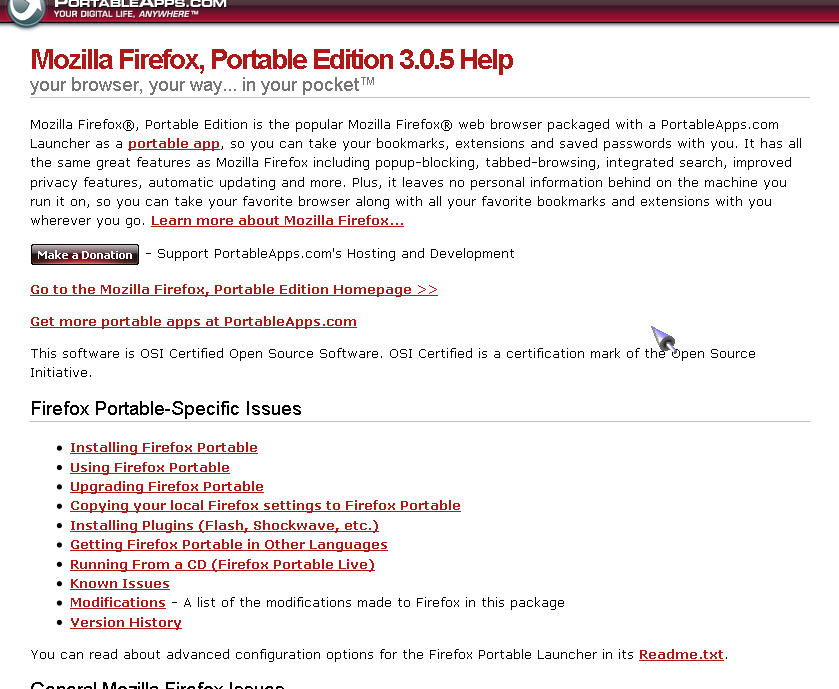ok, pan_fee, ist ja weihnachten.....

der portable ff mit ordnerstruktur von Knobloch:
Portable _Firefox 3.0.5_deutsch
>Firefox - hier ist enthalten, was auch im stationären ordner (pfad....\Mozilla Firefox) enthalten ist.
>Profilordner - hier ist drin, was im stationären profilordner (pfad....\Profiles\xxxxxxx.name) enthalten ist.
>FirefoxLoader.exe - startet den portablen ff
>MultipleFirefoxLoader.exe - startet eine weitere instanz, sowohl zum stationären, als auch zum portablen ff
>Readme.txt
dito von Haller:
FirefoxPortable
>App - weitere unterordner
>Data - weitere unterordner (unter anderen der eigentliche profilordner)
>Other - weitere unterordner mit bildern, anleitungen und sourcen
>FirefoxPortable.exe
>FirefoxPortable.ini
und hier wird's jetzt komplizierter, weil viele unterordner, mit sinnvollen funktionen und alles über ini-dateien steuer- und auswählbar.
mit die wichtigste ist die FirefoxPortable.ini, die die grundfunktion des port. apps bestimmt, beispielsweise ob multiple instanzen erlaubt sind oder nicht (deshalb braucht es hier keine MultiLoader.exe) und viele andere verhaltensweisen.
für jede einzelne zu erstellende ini-datei gibt's eine ausführliche anleitung, leider nur in englisch. ich habe mich trotzdem für die version von Haller entschieden, weil knobloch zwar über den parameter -p den profilmanager startet und ein persönliches profil auch korrekt am zielort auf dem stick erstellt, aber ohne diesen kryptischen namen. der heisst eben weiterhin profilordner.
wenn man mit der erweiterung mr. tech toolkit nachschaut, findet man einen profilnamen. der ist aber nirgends auf dem stick vorhanden, sondern wird in die profiles.ini des stationären systems eingetragen.
ich hoffe, nicht darauf eingehen zu müssen, was das bedeutet, wenn dieser stick auf einem fremden system mit dort auch stationär installiertem ff gestartet wird.
bitte, lass' den kelch an mir vorübergehen, ausführlicher darauf einzugehen das ding hat mich schon viele stunden und sicher auch einige jahre meines lebens gekostet.
Haller's prog ist komplizierter einzurichten, nicht wegen der englischen anleitungen, sondern wegen der unterschiedlichen ini-dateien. aber wenn das durch ist, ist der käse gegessen und das prog funzt ohne mucken auf jedem fremdsystem, was ja eigentlich der sinn eines portablen programms sein sollte.
ich beantworte dir gern weiterführende fragen, aber ich hab' selbst noch nicht mal alles abgecheckt. mach dir an einem langen winterabend mal den spass und gehe die anleitungen durch, dann weisst du was ich meine......




